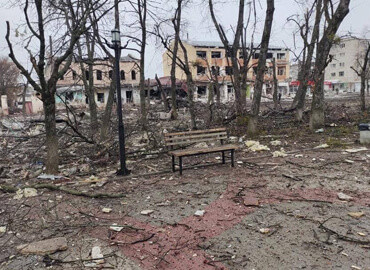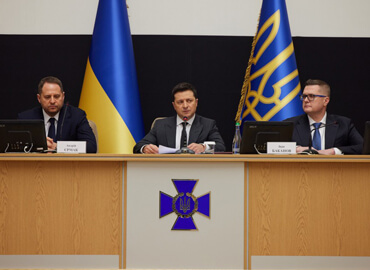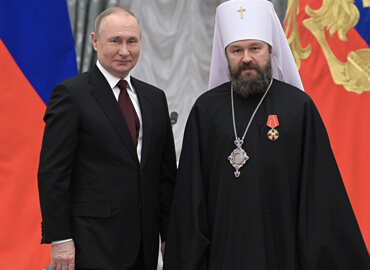The annihilation of Belarus’s sovereignty bears a resemblance to the history of the Baltic countries in 1939-1940, but there are also differences.
Parallels with the three Baltic countries
After the First World War, Lithuania, Latvia, and Estonia, in contrast to the Belarusian Democratic Republic declared at the same time (1918), gained independence and received international recognition. Their sovereign existence lasted just a bit more than 20 years and ended in 1940 with their forced incorporation into the USSR. Belarus has now suffered a similar fate, some 30 years after gaining sovereignty due to the collapse of the Soviet Union.
The scenario for depriving the sovereignty of the Baltic countries in 1939-1940 went as follows: the entering of massive Soviet group of troops (occupation) after issuing ultimata, the holding of rigged elections for new puppet authorities, followed with an incorporation into the USSR (annexation).
In the case of Belarus, a large-scale approximation of the national legal system to the Russian (which can be viewed as a/n (pre-)annexation action) began long before the arrival of thousands of Russian troops to Belarus in early 2022. The process of Belarus’s radical legal and institutional drift towards Russia took shape in November 2021 with the signing of 28 sectoral «union programs» by Vladimir Putin and Alexander Lukashenko. Long before that, Belarus closely aligned to Russia in the military sphere, ceded its information sovereignty and lost a large degree of independence in foreign policy, trade, culture, and education.
The sequence of actions that led to the loss of sovereignty of the three Baltic countries in 1940 and present-day Belarus differs. In the case of the three Baltic states, the harsh whittling down of their legal systems to a common Soviet denominator, «integration» in the humanitarian sphere, and the mass repressions against political opponents and various segments of the population took place after the entry of Soviet troops, which were met with only minor episodes of armed resistance. In the case of Belarus, these processes began even before the deployment of a large contingent of Russian troops in country and accelerated following the rigged presidential elections of August 2020.
The crackdown on sovereignty was in all cases facilitated by dictatorial regimes and the absence of democratic institutions. The type of political regime in modern Belarus has more similarities with the interwar Latvian case. Among the three Baltic countries, the regime of Kārlis Ulmanis in interwar Latvia was the most merciless towards democratic institutions and relied most heavily on security and paramilitary structures. At the same time, Ulmanis pursued a nationalist course, while Lukashenko, on the contrary, has forced out the Belarusian language and culture from the public sphere during the long years of his rule and has pursued a policy aimed at blurring Belarusian national identity. This is the fundamental difference between the two.
The historical parallel with the three Baltic countries in the interwar period becomes even more meaningful if one considers that Belarus is also a Baltic state. Even though this definition is not widely applied to Belarus and the country is landlocked, almost half of Belarusian territory lies in the Baltic Sea basin.
Chronology of the loss of sovereignty
Before the 2020 elections, the Kremlin, as a condition for further political and financial support for Lukashenko, established «deep integration» within the «Union State,» which had been dormant since 1999. This integration pact was eventually signed on November 4, 2021, marking National Unity Day in Russia.
It is this date that should be considered at least a harbinger or even formal end of Belarusian sovereignty in domestic affairs. The «integration» package prescribes the depriving of Belarus of an independent tax policy and its own legal system, strictly regulating the transfer of national legislation to Russian norms in most major areas by the end of 2023. In February 2022, Lukashenko stated that already a third of the «union programs» had been completed.
Several other bilateral and multilateral agreements regulating the socio-economic, humanitarian, military, and other spheres of cooperation between Belarus and Russia preceded this stage. The bargaining over sovereignty and its seizing by the Kremlin in exchange for financial subsidies and political support for Lukashenko has continued uninterrupted since the mid-1990s, and over time this process has become synchronized with the Belarusian election cycles (2010, 2015, and 2020).
On the eve of the presidential elections in 2015, Lukashenko and the Kremlin agreed on the conditions for the functioning of the Eurasian Economic Union (EAEU) and Belarus’s membership in it. From a financial point of view, the main object of the bargaining was two agreements (May 2014 and October 2014) on maintaining in the Belarusian budget export customs duties on oil products produced from Russian oil. These agreements were essentially concluded in exchange for Belarus’s accession to the EAEU as a form of close economic integration with Russia.
In December 2010, just 10 days before the presidential elections and the violent crackdown on the protests, Lukashenko and the Kremlin signed an agreement on duty-free supplies of Russian oil. This occurred a day after Lukashenko signed a set of decrees regarding Eurasian integration, all of which came into force by the end of the month. That is, the oil deal took place in exchange for the involvement of Belarus in the Eurasian Economic Space.
Separately, the rapid loss of Belarus’s sovereignty in other key areas in recent years should be noted. Sovereignty in the media sphere was surrendered by September 2020 (more on this here). Within three weeks of the 2020 elections, the state media agendas of Belarus and Russia were fully synchronized and have remained so ever since. For more than a year and a half, the so-called «Belarusian state media» have been neither Belarusian, nor state-owned, nor media (or rather, only nominally so), but rather propaganda tools controlled by the Kremlin. Since the end of 2020, Belarus has also, among other things, largely lost its independence in foreign policy and defense.
Like Estonia in July 1940?
In 1940, Western societies did not pay close attention to the events around Lithuania, Latvia, and Estonia in the run-up to and during the military occupation and annexation that soon followed. The eyes of the Western press were then turned to the military advances of Nazi Germany and the columns of Nazi military equipment in Paris.
Similarly, the attention of the Western press and politicians has been bypassed in the protracted takeover of Belarus. The signing of the fateful integration pact by Lukashenko and Putin on November 4, 2021, received little coverage in the Belarusian and international media. This is also due to the secrecy of these agreements, the texts of which were published weeks later. The non-withdrawal of a large group of Russian troops from Belarus after the military exercises in early 2022 was soon overshadowed by the Russian military invasion of Ukraine.
As a result, several international organizations and foreign politicians declared Belarus complicit in military aggression, often without mentioning the fundamental fact that it is de facto non-sovereign.
However, not only the international, but also a segment of the Belarusian public has not yet realized the real meaning of the rapid transformation of Belarus into a non-sovereign entity. And this also, from a historical point of view, is not unique.
Historians note that after the entry of Soviet troops into Lithuania in 1940, some representatives of the Lithuanian political elite did not see this as the beginning of an occupation, and the local press was largely silent and published joyful reports.
Soviet propaganda claimed that Moscow’s goal was to overthrow the authoritarian regime of Antanas Smetona and establish a people’s government. Similarly, Russian and «Belarusian state media» continue to convince their audiences that Belarus is one of the most sovereign states in the world, especially when compared to the «puppet» Baltic states, Poland, and Ukraine.
In the cases of Latvia and Estonia, the entry of Soviet troops and their occupation did not result in the immediate removal of their leaders Kārlis Ulmanis and Konstantin Päts from power (Lithuanian President Smetona, unlike them, emigrated). They continued nominally in their leadership positions for about a month, until they were deposed and deported to the USSR in late July 1940. The head of Estonia, Konstantin Päts, signed about 200 pro-Soviet decrees during this time.
In this sense, Lukashenko’s current political position resembles that of Päts in the first half of July 1940. How long Moscow will be interested in maintaining this status quo is an open question. The complete bringing of Belarusian legislation in line with Russian norms within the framework of the agreements signed in November 2021 is scheduled for the end of 2023, and 2024 marks the centenary of the adoption of the first Soviet constitution.
In the end, it is possible that these milestones may prompt Moscow to reconsider its approach even to the preservation of nominal statehood (and not just sovereignty) of Belarus. The current events in the post-Soviet space are so momentous that the variety of possible trajectories of Belarus’s political development in the medium term is greater than ever.
Andrei Yeliseyeu, expert of the EAST Center and iSANS.
This article was commissioned by iSANS specially for Reform.by.
Материал доступен на русском языке: Правовой статус Беларуси: схожесть и отличия сценария-1940 в балтийских странах











